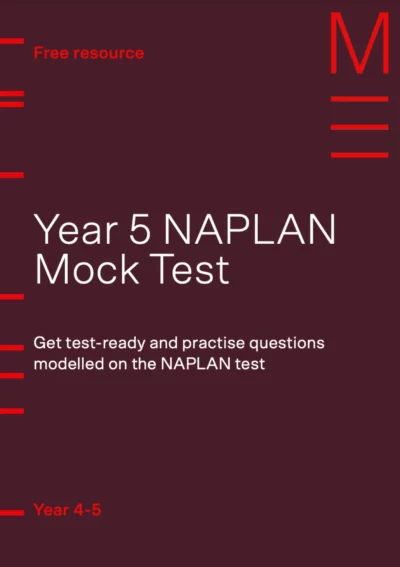Welcome to Matrix Education
To ensure we are showing you the most relevant content, please select your location below.
Select a year to see courses
Learn online or on-campus during the term or school holidays
Learn online or on-campus during the term or school holidays
Learn online or on-campus during the term or school holidays
Learn online or on-campus during the term or school holidays
Learn online or on-campus during the term or school holidays
Learn online or on-campus during the term or school holidays
Learn online or on-campus during the term or school holidays
Get HSC exam ready in just a week
Select a year to see available courses
Science guides to help you get ahead
Science guides to help you get ahead

The Year 5 NAPLAN test assesses four key skill areas: Language Conventions, Writing, Reading, and Numeracy. Each section is designed to measure a student’s ability to apply essential literacy and numeracy skills in different contexts.
Get test-ready and practise questions modelled on the NAPLAN test. Fill out your details below to get this resource emailed to you. "*" indicates required fields
Free Year 5 NAPLAN Mock Test Download

Free Year 5 NAPLAN Mock Test Download
Most schools conduct NAPLAN online, except for Year 3 writing, which is still done on paper.
Some schools may use paper-based tests if they do not have access to online testing facilities.
| Test component | Duration | Number of questions |
| Reading | 50 mins | 35-40 |
| Writing | 42 mins | 1 extended response |
| Language conventions | 45 mins | 50-55 |
| Numeracy | 50 mins | 35-40 |
The Reading test assesses how well students understand different types of texts.
“Why did the main character feel nervous before entering the room?”
Students must complete a writing task in one of three formats:
Your child will be given a ‘writing stimulus’/prompt and asked to write a response. Markers evaluate your child’s writing based on criteria like:
The Language Conventions test evaluates your child’s ability to understand and use correct spelling, grammar, and punctuation.
Your child will be given a mix of common, complex, and high-frequency words to spell correctly.
They may need to correct a misspelt word in a sentence or identify the correct spelling from multiple choices.
This section tests your child’s understanding of sentence structure, verb tense, subject-verb agreement, and punctuation rules.
Students may need to identify errors, choose the correct word or punctuation mark, or rewrite sentences to improve clarity.
Example question:
“Which sentence is correctly punctuated?”
The Numeracy test measures your child’s ability to apply mathematical concepts in real-life situations. It covers:
Example question (Measurement and geometry):
“A rectangular garden is 6 metres long and 3 metres wide. What is its area?”
Get test-ready and practise questions modelled on the NAPLAN test. Fill out your details below to get this resource emailed to you. "*" indicates required fields
Free Year 5 NAPLAN Mock Test Download

Free Year 5 NAPLAN Mock Test Download
© Matrix Education and www.matrix.edu.au, 2023. Unauthorised use and/or duplication of this material without express and written permission from this site’s author and/or owner is strictly prohibited. Excerpts and links may be used, provided that full and clear credit is given to Matrix Education and www.matrix.edu.au with appropriate and specific direction to the original content.